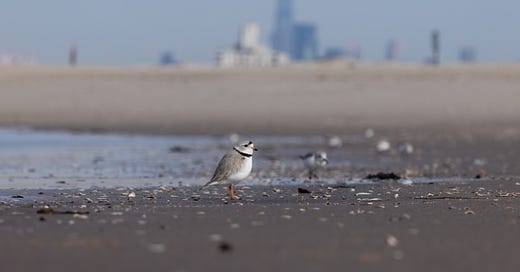it’s here! my book! it’s published! you can order it! if you’re in nyc, you should also attend one of the following upcoming launch events. i would really appreciate if you bought tickets to the caveat event, since that’s the one that requires the most prep work. (also there is more to this post than advertising—article after the jump).
#1: bird walk, talk, and drag show, april 23, meet 7pm @ sunset stoop in sunset park — 4114 5av in brooklyn. we’re gonna explore sunset park, then i’m gonna give a fun intro to nyc nature, my friend alex will do a drag set, and then i’m gonna sign books and maybe more.
#2: pigeon portraits and prose, may 3, 1:30-3:00pm @ caveat on the les. $15, tickets available here. chelsea and i are hosting an irreverent nature writing and illustration workshop. i am SO EXCITED.
#3: intro to birding, may 4, 9-10:30am @ marine park salt marsh nature center. free, no registration required.
#4: golden hour bird walk, may 8, 6-7:30pm @ prospect park stranahan monument. free, registration encouraged.
#5: wings over wave hill, may 18. bird walk 9:30-11am, bird talk on how to document urban wildlife 4:30-5:30pm. all @ wave hill. free with admission to the grounds.
and now, back to our regularly scheduled programming! this is a section of book i really like with a new intro written special for y’all.
on first glance, new york city looks like the largest city in the united states: like concrete, brick, steel, glass, and the occasional park. its inhabitants appear mostly human, pigeon, or rodent, covering its surfaces in paint, trash, and shit (of which it occasionally smells). when i first started birding, i mostly saw it the same way, with the addition of some pretty birds.
but looking beyond birds reveals new patterns. plant and animal species change based on the elevation, distance to the coast, and amount of sunlight. creatures form assemblages: fiddler crabs and cordgrass, hickories and oaks, grass and geese. thankfully, nyc parks has a codex for untangling it all, translating the assemblages into underlying forest types to provide urban foresters with a guide for preserving the city as wildlife habitat. the pdf, titled "guidelines for urban forest restoration,” plays a major role in my understanding of the city, and in turn the book.
nor do the city’s habitats exist in isolation—we live in a uniquely biodiverse area. new york sits at the juncture of land and water, atop an estuary where saltwater and freshwater intermingle. it’s bisected by the boundary between two climate zones, humid subtropical and humid continental. it covers land that dates back over a billion years and land that dates only to the last ice age. the result is far more species diversity than you’d expect from 300 square miles. in brooklyn alone, inaturalist users have logged nearly 2000 plant species, 3000 insects, 350 birds, and 30 mammals. those high numbers can also be explained by the city’s human density, and therefore its many human observers. and there have been lots of humans here for millennia.
biodiversity and ecological abundance was a major draw for the city’s previous inhabitants, mostly lenape people speaking the munsee and unami languages. around 15,000 people from tribes including the canarsee, rockaway, siwanoy, raritan, and wecquaesgeek would have lived throughout the archipelago, moving between its islands to hunt, trade, process wampum, and more. european colonizers largely removed any evidence of these people, either by killing them directly, indirectly via new diseases, or by forcing them out. archaeologists still occasionally uncover evidence of our indigenous predecessors during excavations for new construction.
and then we filled the marshes, paved the grid, and built the skyscrapers. but we didn’t destroy everything—parks, estates, farms, and now landfills preserved patches of the ecosystems and different habitats that supported the lenape and new york’s wildlife. you can still identify these habitats today based on vibes and what kinds of species they contain. of course, they continue to face threats, and i hope people agree that given the city’s biodiversity, its wildlife habitat is extra important to preserve.
combining info from that urban forest restoration pdf, the new york natural heritage program, my observations, and conversations with other naturalists, i wrote the below guide to nyc’s different wildlife habitats which appears in my new book, wild nyc.
appalachian oak-hickory forest
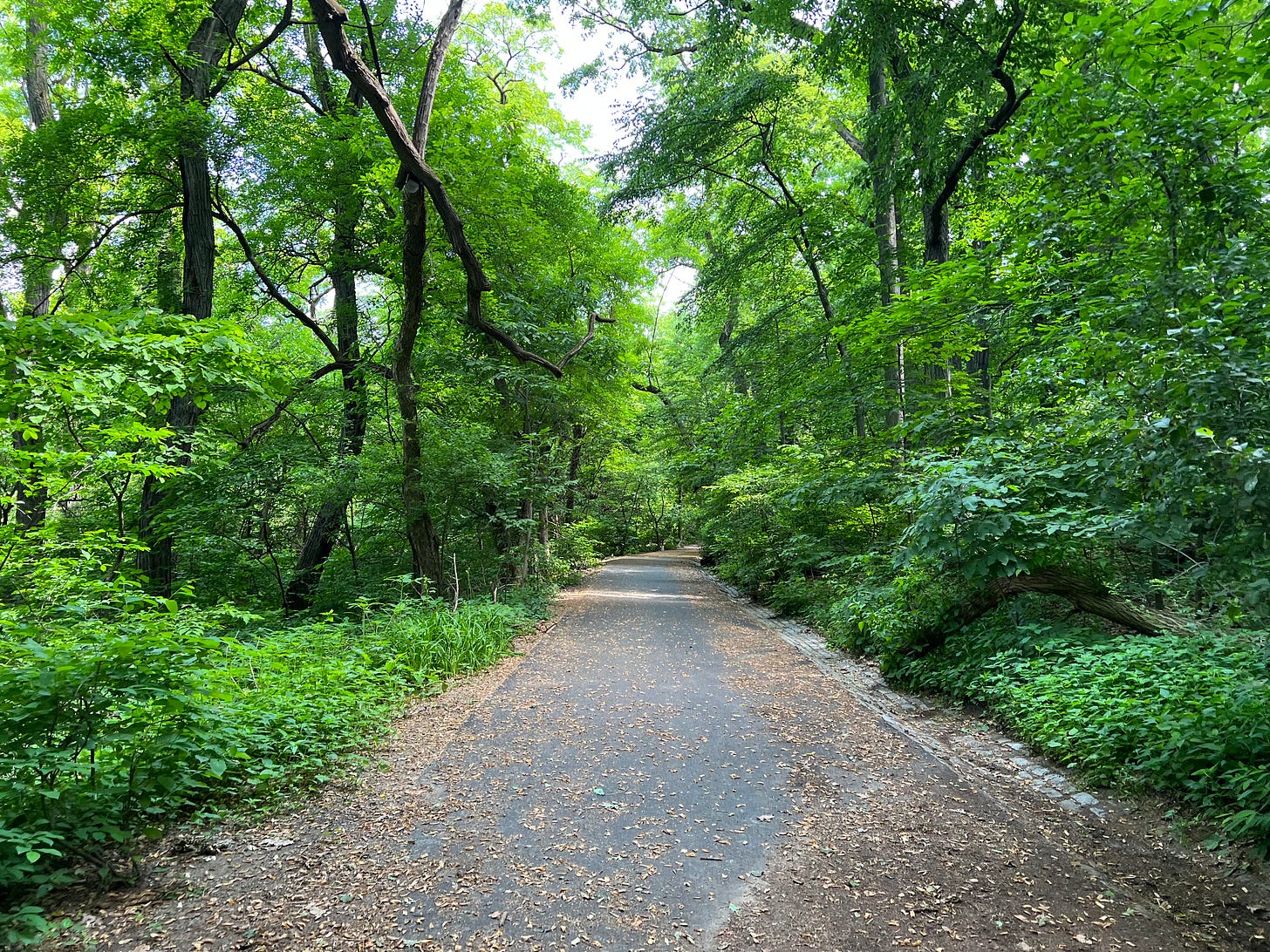
as the name suggests, appalachian oak-hickory forest makes up much of the inland forests nearby, such as in the catskills or the appalachian mountains. it appears in sites with drier soil that drain water quickly where the water doesn’t pool, like on hilltops. in much of the state, this forest type serves as the overarching forest that surrounds other forest types.
this forest features oaks like red, white, and black, hickories like shagbark and bitternut, and understory shrubs like mapleleaf viburnum and witch-hazel. on the ground you might find pennsylvania sedge, mayapple, and wild sarsaparilla. look for pollinators on its flowering plants, plenty of squirrels, and in undisturbed areas you might find raccoons and opossums or breeding songbirds like red-eyed vireos and wood thrushes. some of these forests even have flying squirrels—yes, in nyc.
our oak-hickory forests are prone to invasive species like tree-of-heaven and multiflora rose, plus overbrowsing by deer. forest fragmentation can also negatively impact the species that live in this ecosystem.
you can find examples of this forest type in forest park in queens, parts of the midwood in brooklyn’s prospect park, and high rock park on staten island, and on hills in uptown parks like inwood hill park and van cortlandt park.
rich mesophytic forest

nyc parks uses the term “rich mesophytic forest” differently from new york state, referring specifically to forests with moist, deep, and nutrient-rich soil that allows many tree species to grow. they’re similar-looking to appalachian oak-hickory forests, but they have moister soil.
certain tree communities might outnumber the others depending on the forest, such as oaks and tuliptrees or beeches and maples. here in nyc, these forests often host some of the city’s most impressive trees. in the understory, look for witch-hazel, blackberries, and snakeroot. you might find spring ephemeral flowers—plants that take advantage of the lack of leaves and extra sunlight to flower earlier in spring. perhaps you’ll even find american chestnuts low on the ground—there are a few parks where the city is attempting to bring back this critically endangered tree that was once a cornerstone of the eastern forest.
plus, moister soil means they’re more likely to host salamanders, which can be hard to find in nyc parks. i’ll be featuring more on that in the newsletter next week.
you can find examples of these forests in van cortlandt park, staten island’s mount loretto state forest, forest park, and alley pond park. alley pond is a great place to look for salamanders, especially around its vernal pools—those that fill temporarily and annually, usually during the late winter and spring.
floodplain forests
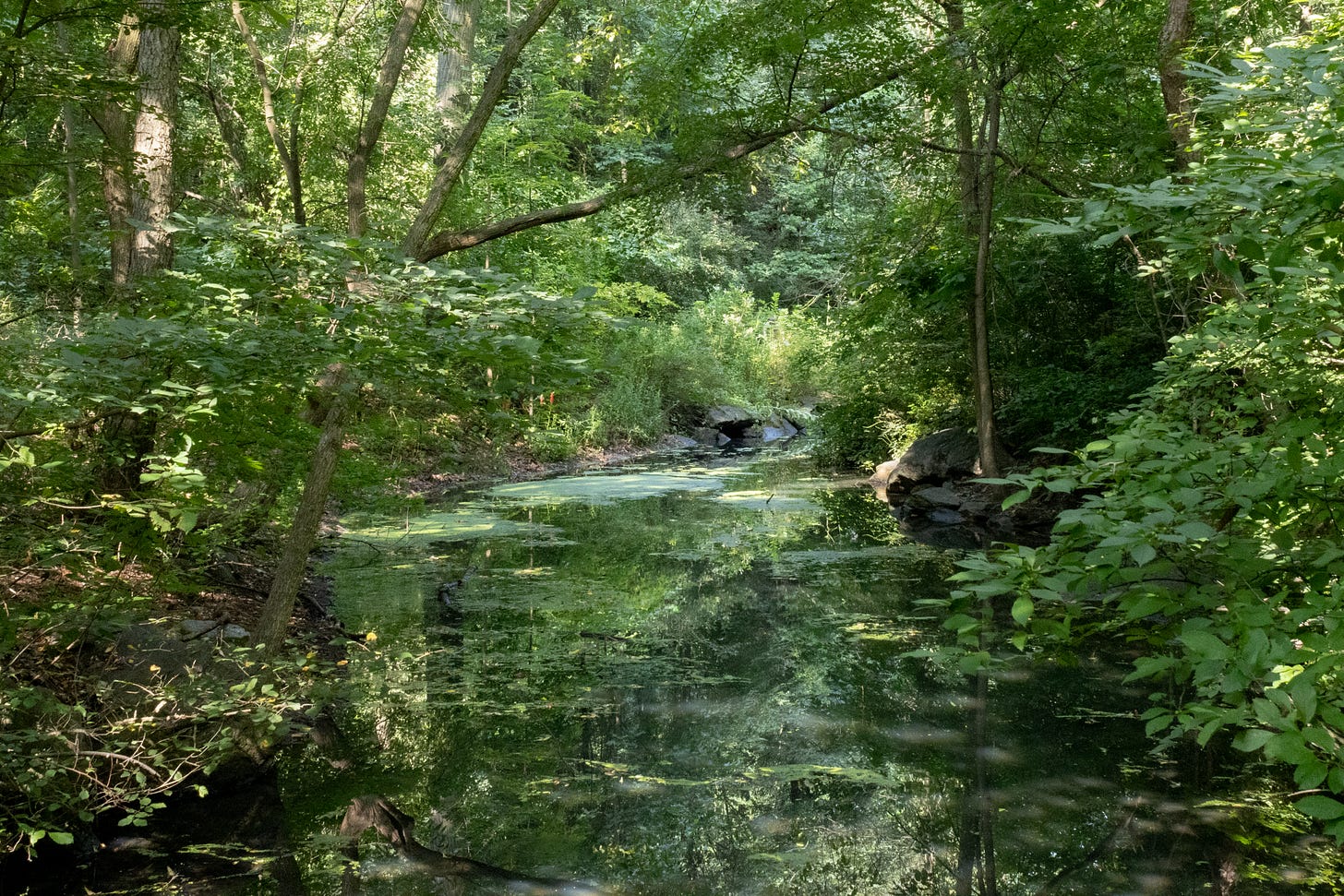
floodplain forests are hardwood forests that grow in wet areas and experience regular flooding, especially beside rivers. they feature plants that can handle those conditions, such as hardwood trees like swamp white oak and pin oak, maples, and sycamores; shrubs like spicebush, alder, and hornbeam; and low herbs like sedges, jewelweed, american jumpseed, and skunk cabbage.
though these forests were once common in the state of new york, they’re much rarer today. their water and mineral-rich soil made them especially vulnerable to clearing for farmland. humans continue to develop and inhabit areas along the waterways lining these forests. because of the scale of human interaction, floodplain forests are prone to invasions by nonnative species like garlic mustard, multiflora rose, and japanese knotweed.
new york city features floodplain forests near its freshwater rivers, such as along the bronx river, along tibbets brook in van cortlandt park, the ambergill of prospect park, and along central park’s loch. these forests are fun places to go birdwatching, as migratory birds come down to bathe in the rivers’ shallow pools on hot afternoons.
red maple hardwood swamp
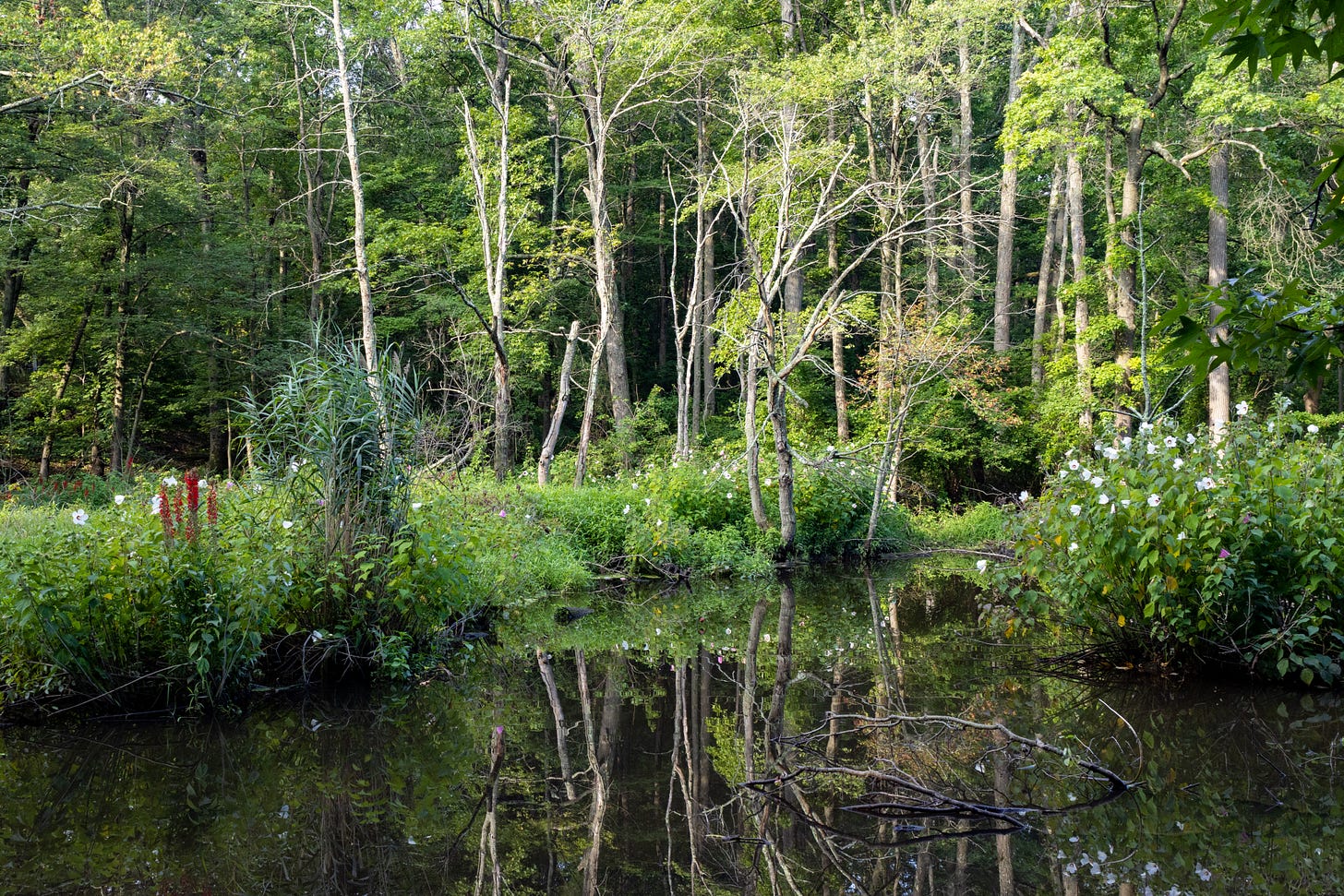
like floodplain forest, red maple–hardwood swamp features plants that can tolerate wet soil. but in the case of these swamps, it’s because the soil doesn’t drain well, causing water to pool. as the name suggests, you can find red maples here, alongside blueberries and spicebush. look for jewelweed and a ground covered by ferns like like cinnamon fern and sensitive fern.
the state recognizes a few kinds of red maple–hardwood swamp that you can identify based on what other trees are around. staten island, for example, has red maple–sweetgum swamps, where sweetgum trees and red maples are co-dominant. the city once held swamps of red maple and swamp white oak, too, though most examples of these are degraded.
these swamps are all threatened by development and runoff (water draining from developed areas that carries chemicals and trash). runoff can bury plants, and its chemicals can prevent natural growth and cause algae to spread, depriving other plants of oxygen.
you can find examples of these swamps at clay pit ponds state park preserve and wolfe’s pond park on staten island, van cortlandt park in the bronx, and alley pond park in queens.
successional forest
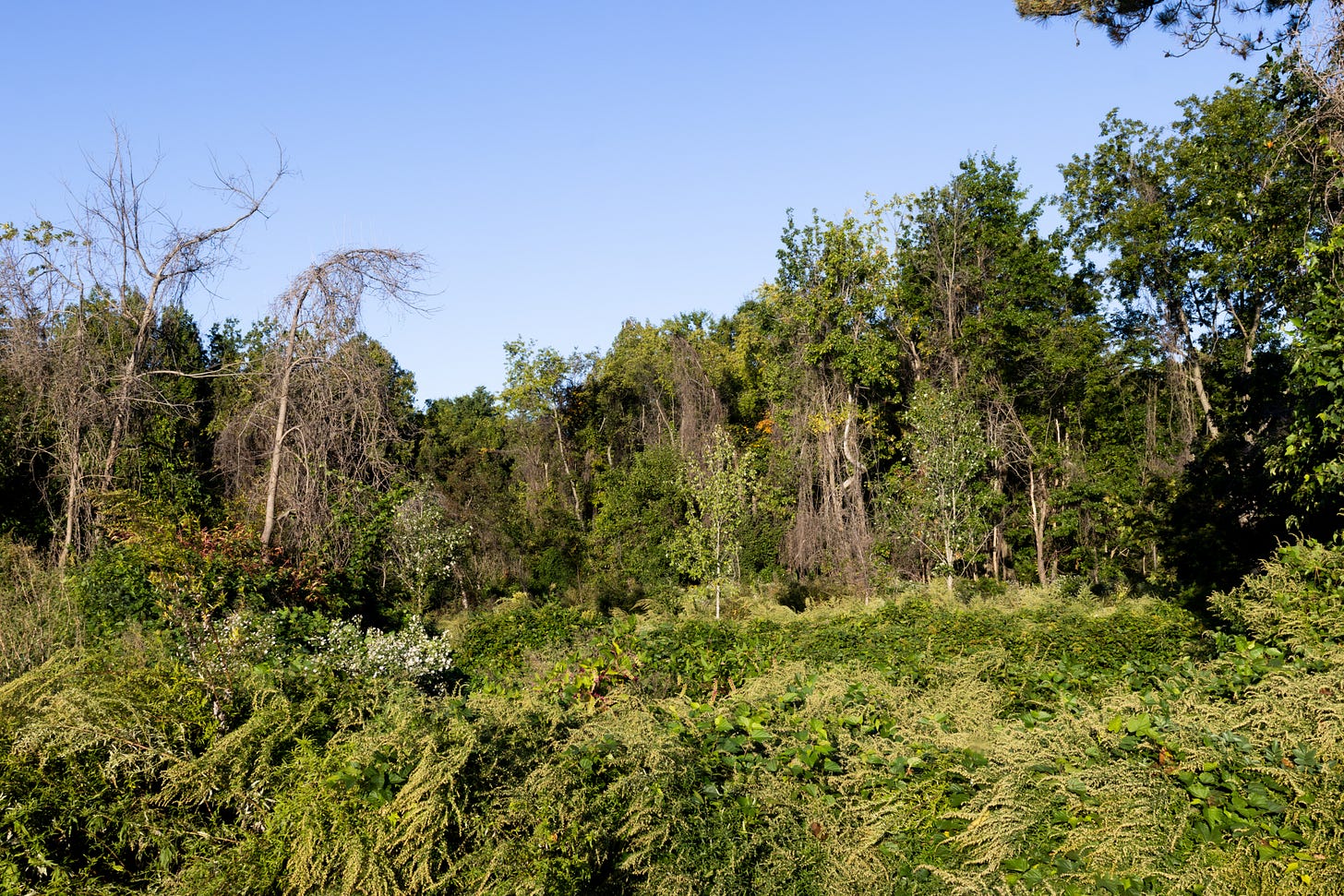
following a disturbance (fire or a tree fall, for example), forests begin the process of ecological succession. in place of the old vegetation, you might find a mix of species from other habitats, especially plants you’d expect to find in meadows and understories.
these areas don’t occur alone—rather, they’re part of the patchwork making up the broader forest. the disturbance clears the forest, fast-growing, sun-loving plants take over, and eventually slow-growing trees shade out the early colonizers and the forest matures to a different forest type. this process is happening constantly across the landscape.
here in nyc, these habitats host pioneer species like black cherries, eastern redcedar, and birches; shorter shrubby plants like spicebush, arrowwood, and sassafras; sensitive ferns; grasses; and wildflowers like wild bergamot and snakeroot. but they’re often subject to invasion by more aggressive introduced species—black locust, porcelainberry, mugwort, and bittersweet. regardless of the plant makeup, these areas hold abundant fruit in the fall, and can attract a variety of common and uncommon birds, pollinators, and mammals like cottontails and groundhogs.
coastal and marine forests
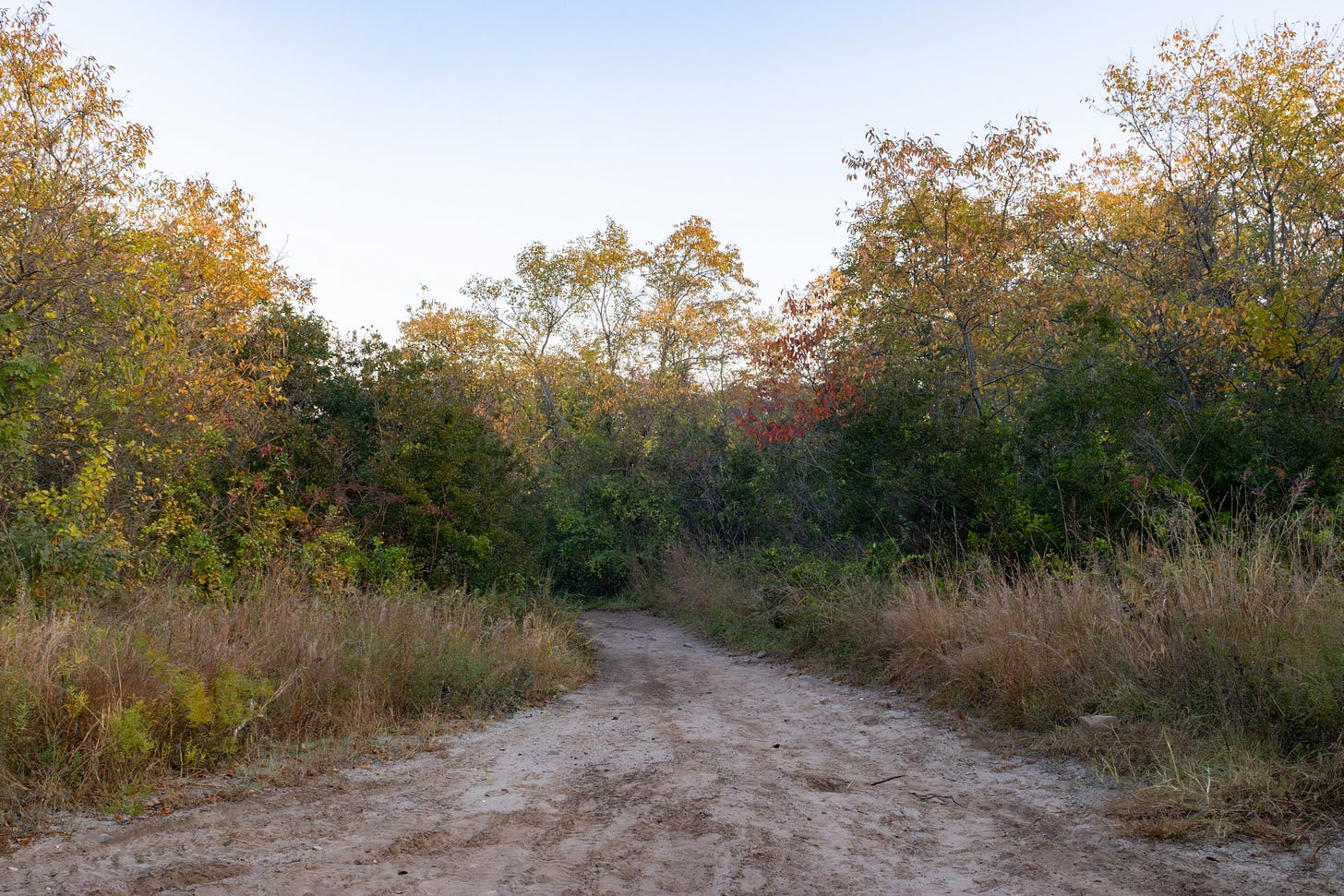
many nyc habitats are influenced by the city’s location on the ocean. salty air and sea spray can kill plant cells, which means certain plants struggle to grow and end up stunted by the harsh conditions, while the salt-tolerant plants survive.
in the city’s seaside habitats, you might find forests and shrublands with plants like pitch pine, eastern redcedar, bayberry, beach plum, beach grasses, and seaside goldenrod. some areas even have stunted trees that look like bonsai. usually, forest succession would lead to new forest types, but salt spray keeps the forest stuck in a state of arrested development. unfortunately, their desirable seaside locations make these marine habitats prone to development pressure, which leads to habitat fragmentation and invasive species.
these forests comprise some of nyc’s best migratory-bird hotspots—the rockaway peninsula and jamaica bay, for example—as migratory birds hit the coast and stop from fear of crossing the water. these habitats transition into dunes and beaches, and while plant diversity drops, interesting creatures thrive like the rare seabeach amaranth, piping plovers, harbor seals, and ghost crabs. you can find good examples at the marine park salt marsh nature center in brooklyn and idlewild park in queens.
salt marsh
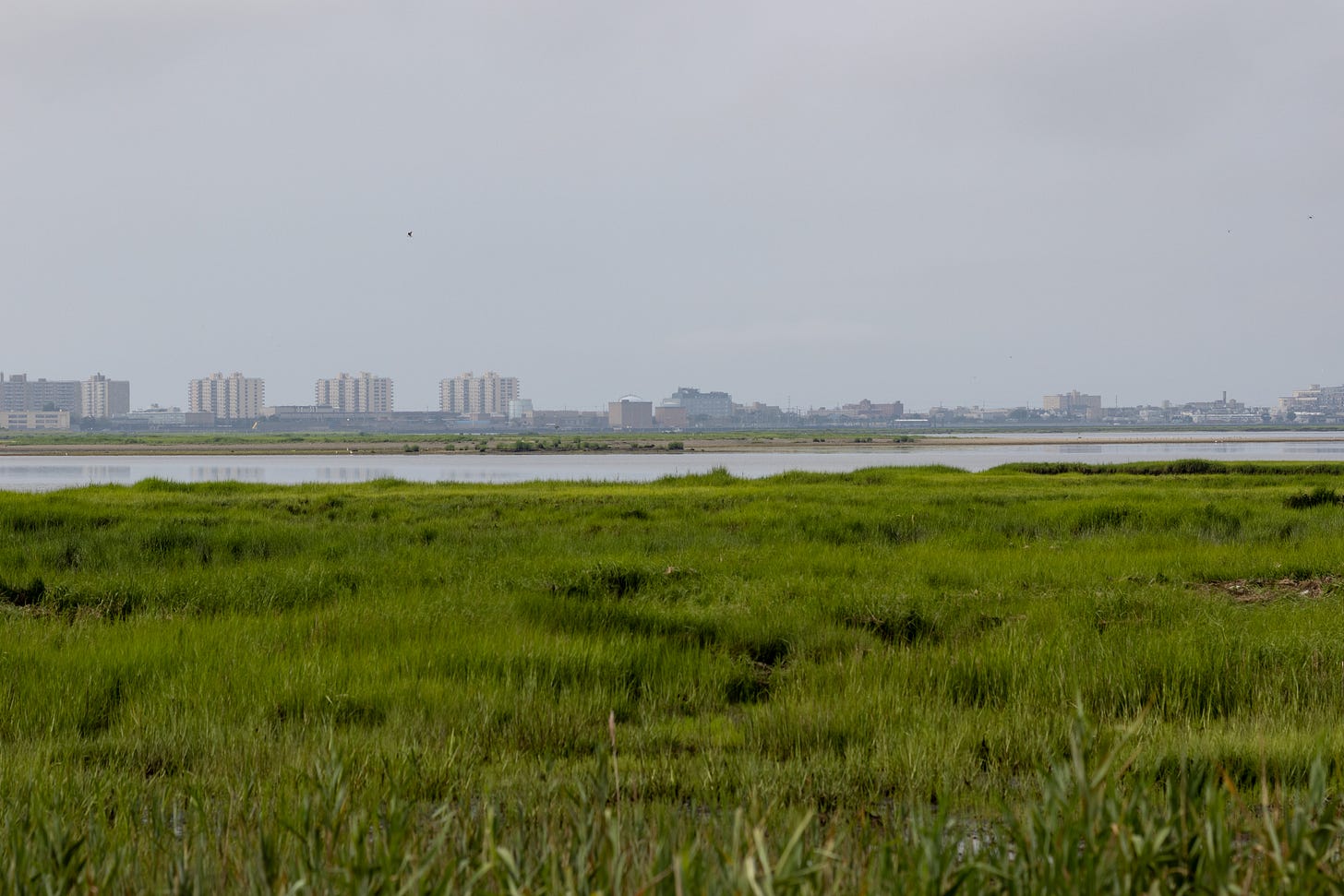
salt marshes once blanketed the five boroughs. but less than 20 percent of those marshes remain. intense landfilling and development since the beginning of european colonization have caused major losses to this threatened habitat.
the city’s 4000 acres of remaining (though often degraded) salt marsh still play an important role, though. they create habitat for birds, insects, plants, and fish, filtering pollutants from water, and buffering the land against the effects of storm surges. thankfully, the city continues to restore marshland along the coast.
salt marshes feature their own structure governed by tides. most of the marsh occurs in what we call the “intertidal zone,” the area of land that’s submerged during high tide and revealed during low tide. closest to the water, you’ll find mudflats dotted with mollusks, clumps of sea lettuce, and sometimes flocks of feeding birds like gulls, sandpipers, and waterfowl. around the average tide level, you’ll see what we call low marsh, the part dominated by salt marsh cordgrass. low marsh transitions into high marsh, the part of the intertidal zone least often covered by saltwater, with a new selection of plants and higher plant diversity. further inshore, you see taller, woodier plants as the marsh turns into marine and coastal forest.
salt marshes supporting breeding populations of interesting flora and fauna include brooklyn’s plumb beach, the thomas pell wildlife sanctuary in the bronx’s pelham bay park, idlewild park in the farthest stretches of queens, jamaica bay, and parts of staten island, such as the saw mill creek park.
repurposed landfills
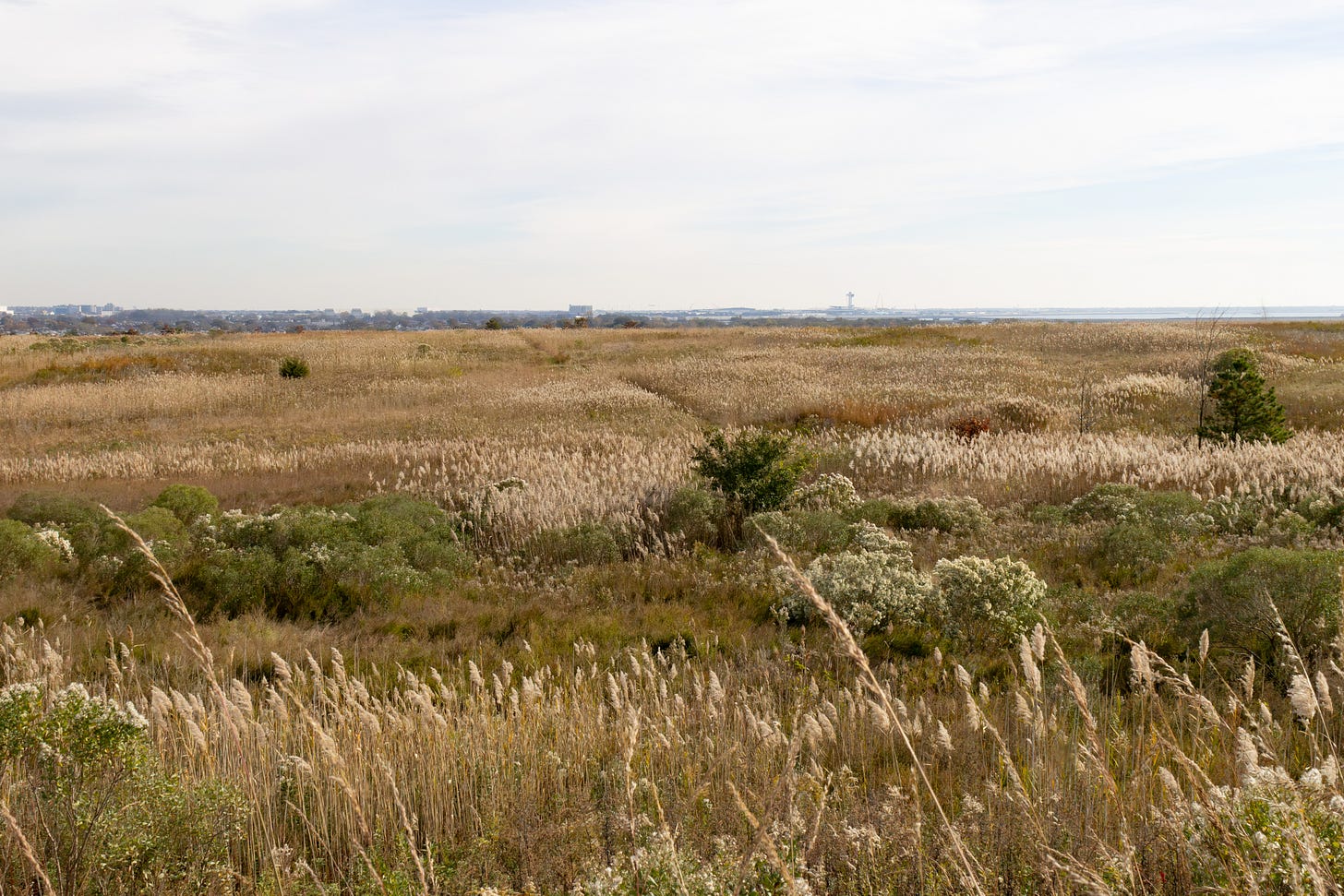
while much of nyc is built atop filled land, certain city dumps became notorious for their scale and stench. but today, they’ve become some of the city’s most interesting places to observe wildlife.
let’s take the former fresh kills landfill. fresh kills was once valuable salt marsh habitat until landfill extraordinaire robert moses came along in 1948. like other sites in the city, it was meant to be filled for a few years, then capped and developed for other uses. but instead, it remained the fresh kills garbage dump for municipal and residential waste for a half-century, becoming the world’s largest dump during that time. the site eventually hit capacity, and ny state ordered it to close in the late 1990s. It accepted its last fill in 2001—material from the world trade center after 9/11.
following the landfill’s closure, fresh kills was rebranded to freshkills and received a cap consisting of a soil layer, a venting layer to absorb and collect gas emitted from the soil, an impermeable plastic liner, a layer to prevent water from entering the trash, and then two feet of soil to protect the drainage layer. atop that is planting soil. and in that soil, freshkills staff planted native grasses, shrubs, and trees, creating a vast grassland.
today, you can find red foxes, diamondback terrapins, grasshopper sparrows, and other animals rare in the city. recently, sedge wrens—a bird more common in midwestern wetlands—have bred at freshkills park. it’s probably the best example of a landfill grassland, but not the only one: you can visit shirley chisholm state park, too, while the pelham bay landfill and edgemere landfill have also received caps.
the street
while researching for the book, some of the most interesting animals and plants i noticed weren’t in parks—they were in sidewalk trees. but if you look at old photos of nyc, you’ll see very few trees lining the streets.
back before air conditioning, people would die during the summer from heat exhaustion. but in the late nineteenth century, a doctor named stephen smith proposed that plants could help protect people from the extreme temperatures. he noted that even a spot with a “clump of trees” is cooler in summer and warmer in winter.
the city government, community boards, and private residents have since started filling the city streets with trees, creating an urban canopy of human design. nyc parks maintains an approved species list for street tree plantings, determining which to plant based on factors like the soil, amount of water, and how the tree’s height will impact surrounding structures.
our street trees benefit humans, but they don’t always benefit our native ecosystems. london plane, for instance, lacks the native insect diversity required to make it attractive to migrating songbirds. but other trees, like our native oaks, can harbor lots of biodiversity—interesting bugs, birds, mammals, and more.
another habitat you might find on the street is the lawn, fields of mowed grass. lawns take lots of water to maintain, lack biodiversity, and the constant mowing releases greenhouse gases into the atmosphere. these days, naturalists encourage folks to mow less—even going a few weeks between mowing could be helpful. or, think about replacing your lawn with native plants to help support biodiversity.
but no matter what we do to the city, it’ll always be wildlife habitat. weeds will continue to grow from cracks in the sidewalk, birds will continue to land in the street trees or run into duane reade, and insects will continue to scare and bite you. i hope folks can learn to accept these facts, and develop the city into a place that welcomes, rather than ignores its innate biodiversity and the species assemblages that make it special. after all, the city’s borders are arbitrary to all creatures but us.

